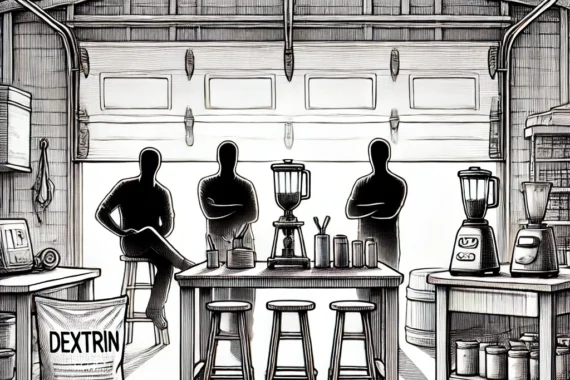Welcome to the First Episode of Evolution of TOPCORE In this series, we’ll take you on a step-by-step journey through the history of our...
TOPCORE and FORLIT, two prominent players in the paper industry, have recently initiated a collaborative effort to enhance the efficiency and sustainability of paper honeycomb production. TOPCORE, a provider of innovative solutions and eco-friendly adhesives, introduced its advanced dextrin adhesive to this collaboration. FORLIT, a manufacturer and supplier of paper honeycombs, was seeking ways to increase production speed, reduce material consumption, and minimize the environmental impact of its operations. This case study provides an in-depth examination of the testing and implementation of dextrin adhesive in FORLIT’s production processes.
TOPCORE is a leading European manufacturer and supplier of dextrin adhesives for the paper industry, known for its innovative approach and strong focus on sustainability. Their products are widely used in various sectors of the paper industry across more than 20 countries worldwide.
Founded over 50 years ago, FORLIT is a leading manufacturer and supplier of paper honeycombs, which are used in the packaging industry, construction, and other sectors. The company is committed to quality, efficiency, and sustainability in its products and processes. Seeking new and improved production methods is a key part of their strategy to maintain competitiveness in the market.
Overview of Technologies and Materials
Dextrin Adhesive
The dextrin adhesive developed by TOPCORE is an innovative adhesive solution derived from natural polysaccharides—specifically, potato starch dextrin. Its chemical composition ensures high adhesiveness, fast drying, and excellent bond strength. The adhesive is made from starch, making it a more environmentally friendly option compared to traditional synthetic adhesives.
Key advantages of dextrin adhesive include:
- Environmental Sustainability: Its composition is biodegradable and poses no burden on the environment.
- High Adhesiveness and Strength: It provides strong bonds that are resistant to mechanical stress.
- Fast Drying: It enables faster production processes due to a shorter drying time.
Comparison with Other Adhesive Types
Traditional synthetic adhesives, such as polyvinyl acetate (PVA), offer benefits like high strength and moisture resistance. However, their production and use often involve toxic chemicals, which can negatively impact the environment and the health of workers.
In contrast, dextrin adhesive provides an eco-friendlier alternative while maintaining high-performance standards. When compared:
- PVA Adhesives: They offer good adhesiveness and strength, but their production involves petrochemical raw materials.
Paper Honeycomb Manufacturing Process
The production of paper honeycombs involves several steps:
- Material Preparation
- Paper Strips: Paper is unwound from large rolls and gradually fed into the production line.
- Core Manufacturing
- Adhesive Application: Paper passes through a glue application system. The adhesive is applied using rods with millimeter-sized holes, which are spaced according to the desired cell size of the honeycomb core.
- Paper Bonding: After applying the adhesive, the paper layers are bonded together. The process must ensure even application of the adhesive and a strong bond between layers.
- Structure Formation: The bonded papers pass through a cutting machine, which creates the characteristic honeycomb structure. The cutting must be precise to achieve the correct cell size and shape.
- Lamination
- Core Transfer for Lamination: The finished honeycomb core is transferred to the next stage of the production line for lamination.
- Laminating Material Application: A cover layer (e.g., additional paper layers, plastic films, etc.) is applied to both sides of the honeycomb core, depending on the desired properties of the final panel.
- Laminating Bonding: The laminate is attached to the honeycomb core using adhesive or other suitable methods. The process must ensure a strong and even bond, making the final panel durable and stable.
- Final Finishing
- Panel Cutting and Shaping: Finished honeycomb panels are cut to the required dimensions and shapes according to specifications.
- Quality Control: Panels undergo quality control to verify correct dimensions, bond strength, and overall product quality.
- Packaging and Shipping
- Packaging: Finished honeycomb panels are packaged for transport to protect them from damage during shipment.
- Shipping: Panels are then shipped to customers according to orders.
Testing Implementation Phases
1. Project Preparation and Planning
The testing implementation began with thorough planning and preparation. Expert teams from TOPCORE and FORLIT met to define the project’s objectives and design a detailed implementation plan. This phase included training FORLIT personnel on new technological processes and safety standards.
The first phase involved several key activities:
- Current State Analysis: A detailed assessment of existing production processes at FORLIT, including machinery, adhesives, materials, and operations, to identify areas for improvement.
- Goal Definition: Setting goals such as increasing production speed, reducing material consumption, and minimizing the environmental impact of the new adhesive.
- Resource Planning: Identifying the necessary resources, including human, financial, and technological, for a successful implementation if testing yields satisfactory results.
2. Equipment Testing and Calibration
The next phase involved equipment testing and calibration. Initial steps included laboratory tests of the dextrin adhesive to verify its suitability for use in paper honeycomb production. This was followed by a pilot production phase, during which no modifications to the machines were necessary—the equipment remained as it was used with the previous adhesive types.
Testing was conducted in two main steps:
- Laboratory Tests: Assessing the adhesive properties, drying time, and bond strength under controlled conditions, adjusted to closely replicate conditions at FORLIT.
- Pilot Production: Deploying the adhesive on a small scale on actual production lines, monitoring performance, and identifying potential issues.
Results and Benefits
Improved Production Speed and Efficiency
The implementation of dextrin adhesive significantly improved production speed during the tests. FORLIT’s production lines operated more smoothly, resulting in a 15% increase in output. The acceleration of the production process was achieved through faster adhesive drying and optimized dosing, which minimized downtime and increased overall efficiency.
Specific data:
- Production Speed: Increased by 7%
- Drying Time: Significantly reduced, allowing products to move more quickly through the production process.
Reduction in Material Consumption and Costs
Through optimized adhesive dosing, material consumption was reduced by 15-20%. This decrease not only contributed to lower production costs but also provided environmental benefits by reducing raw material usage. Lower adhesive consumption also means lower raw material costs and reduced waste volume.
Economic benefits:
- Raw Material Cost Reduction: A 15-20% decrease, representing annual savings of over €50,000.
- Reduced Waste Volume: Waste reduction to less than 1%, lowering disposal costs and improving the company’s ecological footprint.
Environmental and Economic Benefits
Dextrin adhesive, as a biodegradable material, offers environmental advantages. Reducing toxic waste and lessening the environmental burden are key benefits. Economic advantages include not only lower raw material costs but also enhancing FORLIT’s reputation as an environmentally responsible company.
Environmental benefits:
- Biodegradability: Eliminating toxic chemicals from the production process.
- Carbon Footprint Reduction: Lowering CO2 emissions through reduced energy and raw material consumption.
Reputational benefits:
- Environmental Responsibility: Strengthening the company’s image as a leader in sustainability, attracting environmentally conscious customers.
- Marketing Advantages: Utilizing the ecological benefits in marketing campaigns to enhance market competitiveness.
Challenges and Solutions
Issues Encountered During Testing and Their Resolution
Naturally, various challenges arose during testing, such as initial incompatibility of some machines with the new adhesive and the need for additional adhesive modifications. However, thanks to close collaboration between TOPCORE’s laboratory team and FORLIT’s technical team, these issues were quickly identified and resolved.
Main challenges:
- Technical Incompatibility: Some machines were not originally designed for use with TOPCORE’s dextrin adhesive, necessitating adjustments and additional changes to the adhesive formulation.
- Personnel Adaptation: The need for thorough staff training and changes in established work procedures.
Solutions:
- Adhesive Formula Adjustment: Collaborative efforts between both teams led to a custom adhesive formula modification that ensured optimal application on individual paper layers using the original machines.
- Training and Support: Intensive staff training and continuous support ensured a smooth testing process.
Conclusion
The test implementation of dextrin adhesive in paper honeycomb production at FORLIT brought significant benefits in terms of efficiency, cost savings, and environmental impact. The collaboration between TOPCORE and FORLIT demonstrates how innovative materials and technologies can deliver practical advantages in industrial production. This case study serves as an inspiration for other manufacturers seeking to improve their processes and reduce the ecological impact of their operations.
Summary of Key Points:
- Production Efficiency: A 7% increase in production speed.
- Cost Efficiency: A 15-20% reduction in material consumption.
- Environmental Sustainability: Biodegradable adhesive and reduced toxic waste.





